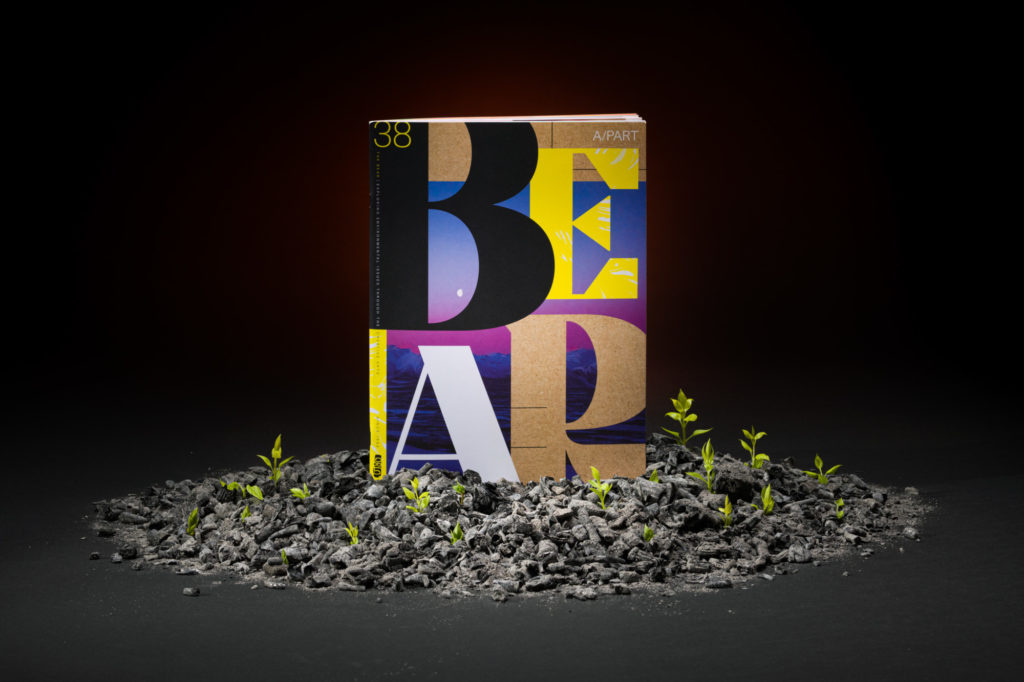These pages were designed as a time capsule brimming not only with art, but also with stories of the humans making art over the past year (2020-21). Rather than paint a broad picture, they are meant to reveal bright glimpses of what it looks like to fight, to grieve, to celebrate, and to take up space. This issue grapples with a sense of urgency at the intersections of art, identity, and the environment in an expansive sense; through the words and work of artists, designers, organizers, storytellers, and poets.

(photographed by Mario Gallucci)
A/PART is the latest issue (#38!) of a magazine that started as the Bear Essential and became the Bear Deluxe—one piece of [this] nonprofit, volunteer-run organization, Orlo, with the mission to explore art and the environment on the brink. The Bear has survived many evolutions since 1993. Our aim has always been to provoke and explore. We have been fortunate to find fans among writers and artists, punks and academics, artists and instigators who are interested in issues of the environment and a sense of place as a nexus of culture. A/PART is a labor of love, born from an endeavor to re-vision this project and to consider what our legacy could be…